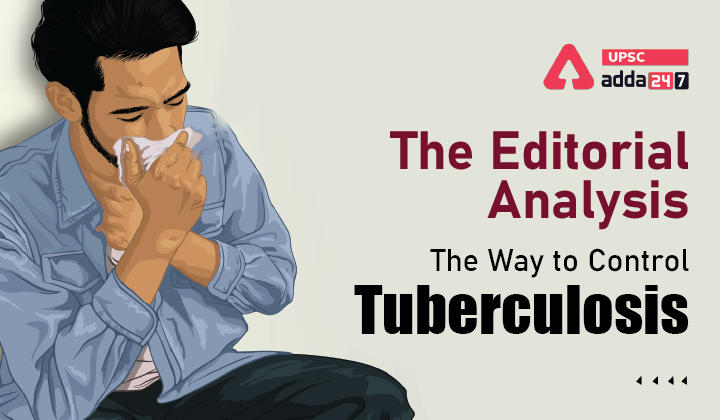Table of Contents
Tuberculosis (TB) in India: Relevance for UPSC Exam
- GS Paper 2: Governance, Administration and Challenges– Issues relating to development and management of Social Sector/Services relating to- Health.
Tuberculosis (TB) in India in News
- Tuberculosis is the worst among endemic diseases, killing 1.5 million people every year (WHO). TB affects adults in their most productive years and therefore impoverishes the family and the nation.
Tuberculosis (TB) in India
- In India, the TB capital of the world, the disease kills some 1,400 persons every day. These are gross estimates, for our health management system has no method to count the exact numbers.
- In the 1950s and ’60s, India was the global leader in research in epidemiology, transmission and domiciliary treatment of TB.
- India is a high-burden country. Large proportions of adults carry TB infection in the lung in a dormant condition for life (latent TB). Some among them deteriorate and develop overt TB disease (reactivation TB).
- HIV infection, diabetes, undernutrition, lung damage due to pollution, tobacco smoking, fall in immune functions due to chronic diseases, alcoholism, etc. accelerate reactivation TB.
TB Control Programs in India
- National TB Control Programme: The National TB Control Programme of 1962 was a district-based one with public-private participation.
- However, upscaling the model proved unsuccessful and the programme failed to control TB.
- Revised National TB Control Programme (RNTCP): With that we lost self-confidence and began doing what we were told to do by the WHO under the Revised National TB Control Programme (RNTCP).
- WHO experts, without factoring in the differences between the TB epidemiology of poor and rich countries, used a theoretical construct of TB control to design RNTCP.
- By 2018, India realised that light at the end of the tunnel was still elusive.
Associated Concerns with RNTCP
- Lack of Proper Monitoring: For a programme that is heavily funded by the government, there is no prescribed method of monitoring the trajectory of TB control.
- The assumption that treating pulmonary TB patients alone would control TB was epidemiologically fallacious in India. The theoretical principle is ‘source reduction’.
- If one patient is the proximate source of infection and disease to another in the community, early diagnosis and treatment would work as source reduction.
- Lack of People Participation: RNTCP has failed to elicit people’s partnership in TB control. In India’s AIDS Control Programme, public education was given high priority.
- Red ribbon clubs in schools and colleges are its legacy. Without people’s informed participation, stigma and delay in seeking help will continue.
Tuberculosis (TB) in India- Way Forward
Epidemiologically, human mastery over microbes includes control, elimination and eradication.
- Control refers to the reduction of disease burden through specific interventions to a pre-determined level in a pre-stated time period.
- Evidence will have to show that reduction was due to those interventions and not due to a ‘secular trend’.
- Diseases that have social determinants tend to decline over time with better housing, nutrition, education and income — this is what a ‘secular trend’ is.
- Globally, by this ‘secular trend’, the burden of TB had been falling by 1% or 1.5% per year.
- Elimination refers to achieving zero frequency of new cases. As we have a huge backlog of latent TB, we cannot eliminate TB, but we must aim for a high level of control (lowering from 200 per lakh per year to 50 per lakh per year) and document it with measurement.
- High control is achievable as we have major assets by way of the RNTCP.
- Trained State and District TB officers are already on the job and we have an extensive network of TB clinics and an army of community and field workers.
- Once the deficiencies listed above are corrected, we can control TB.




 TSPSC Group 1 Question Paper 2024, Downl...
TSPSC Group 1 Question Paper 2024, Downl...
 TSPSC Group 1 Answer key 2024 Out, Downl...
TSPSC Group 1 Answer key 2024 Out, Downl...
 UPSC Prelims 2024 Question Paper, Downlo...
UPSC Prelims 2024 Question Paper, Downlo...




